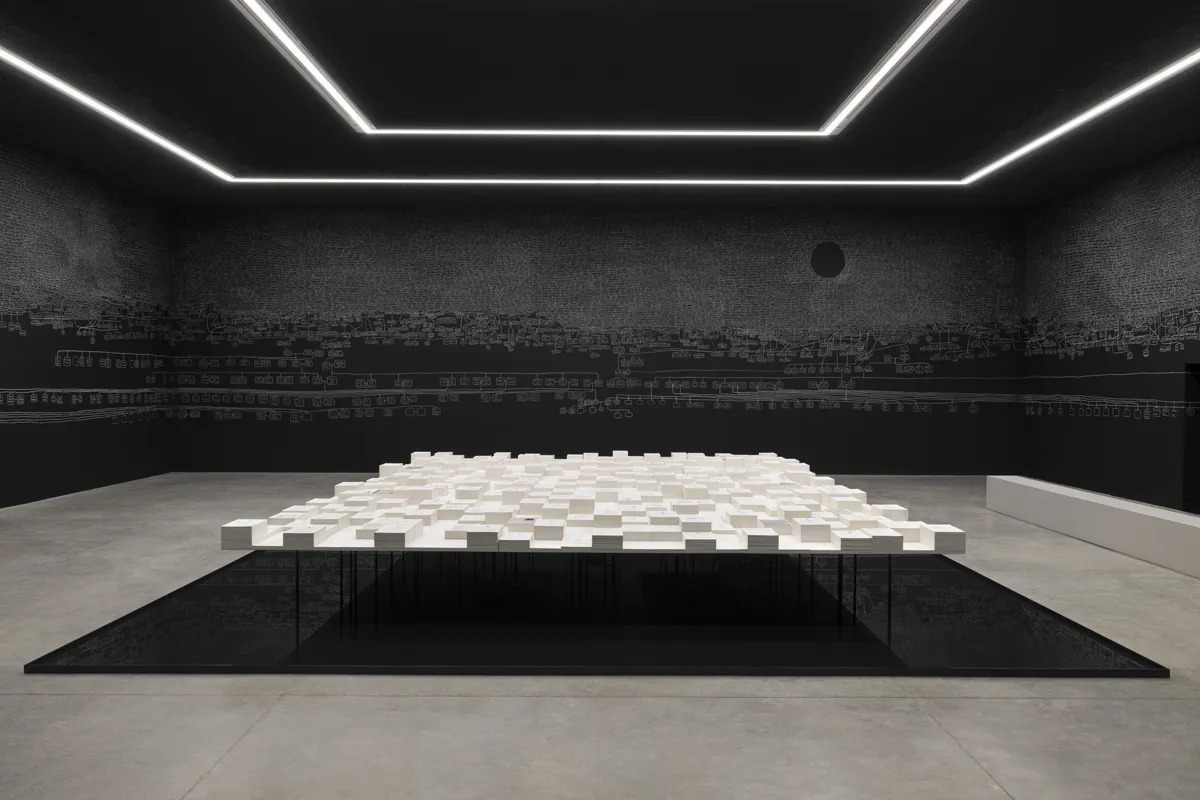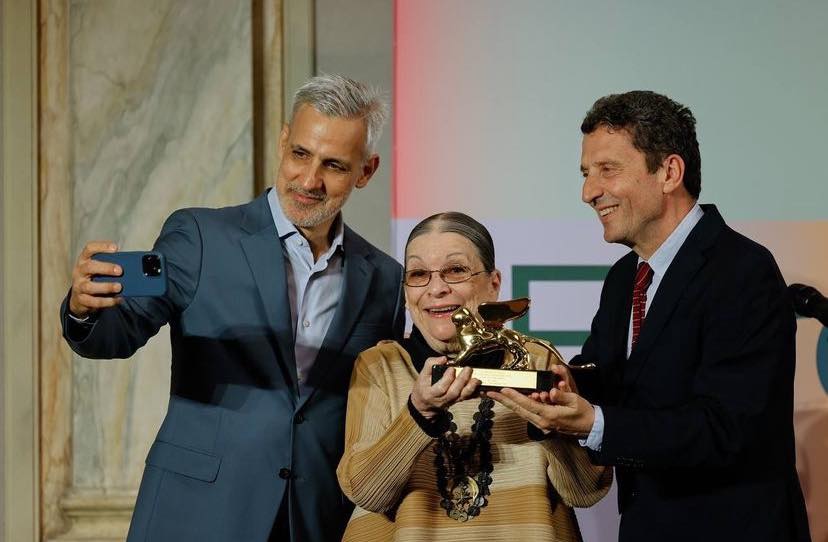Venice Biennale’s prizes went to indigenous artists. the Golden Lion for the main curated exhibition going to the Mataaho Collective, which consists of four Māori women artists: Bridget Reweti, Erena Baker, Sarah Hudson, and Terri Te Tau. The Golden Lion for the National Pavilion was given to Archie Moore (Kamilaroi/Bigambul), who was Australia’s representative at the Biennale this year.
In the main exhibition curated by Adriano Pedrosa, the Mataaho Collective, hailing from Aotearoa (New Zealand), presents “Takapau” (2022), an evocative installation crafted from woven and latticed polyester hi-vis tie-downs. Serving as the gateway to the Arsenale section of the Biennale, this large-scale work captivates viewers with its dramatic lighting and intricate design.
The jury said: “Drawing inspiration from matrilinear textile traditions, the installation embodies both a cosmological narrative and a protective sanctuary. Its remarkable scale stands as a testament to the collective strength and creativity of the group.”
Meanwhile, Queensland-based Moore has transformed the Australia Pavilion in the Giardini with two striking installations. The pavilion’s walls have been painted chalkboard black, serving as a canvas for Moore’s meticulous hand-written inscriptions of his family tree, spanning an astonishing 65,000 generations. In the heart of the pavilion sits a reflective pool, upon which rests a rectangular plinth. Adorning this structure are numerous redacted documents documenting the deaths of First Nations people while in police custody.
“Thus, 65,000 years of history—both recorded and lost—are etched onto the somber walls and ceiling, prompting viewers to fill in the gaps and contemplate the inherent fragility of this poignant archive,” the jury added.
This year’s jury was chaired by Julia Bryan-Wilson, an American curator who is an art history professor at Columbia University, who selected the winners alongside four other international curators. They are Alia Swastika, an Indonesian curator and writer who is the director of Biennale Jogja Foundation in Yogyakarta, Indonesia; Chika Okeke-Agulu, a Nigerian curator and art critic who is a professor of art history and African American studies at Princeton University; Elena Crippa, an Italian curator who is the head of exhibitions at the Whitechapel Gallery in London; and María Inés Rodríguez, a French Colombian curator who is director of the Walter Leblanc Foundation in Brussels and artistic director of Tropical Papers.











